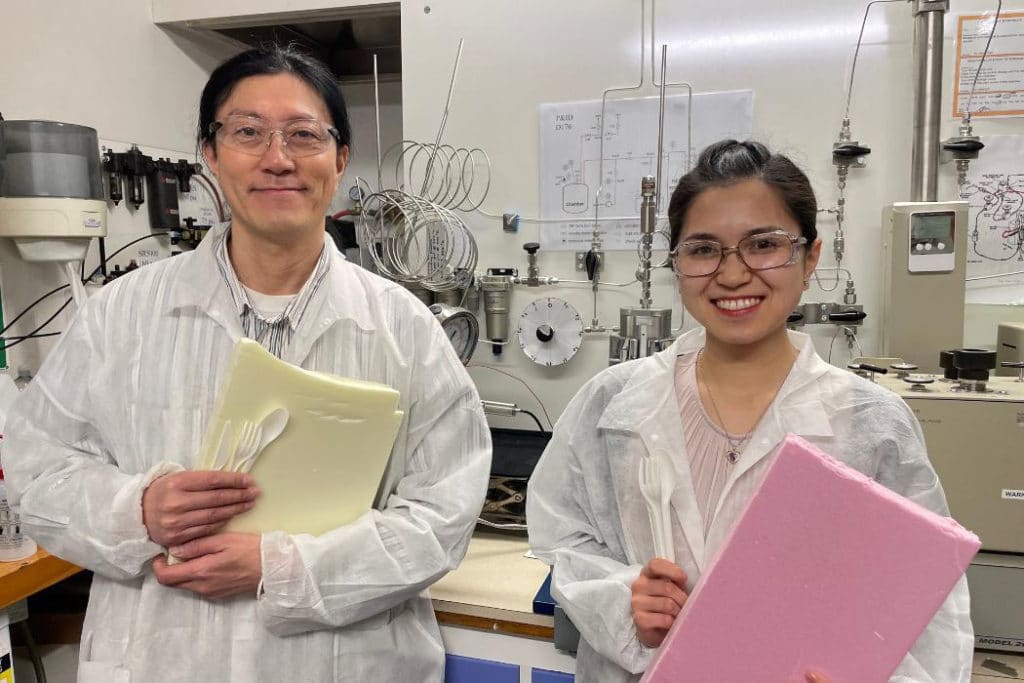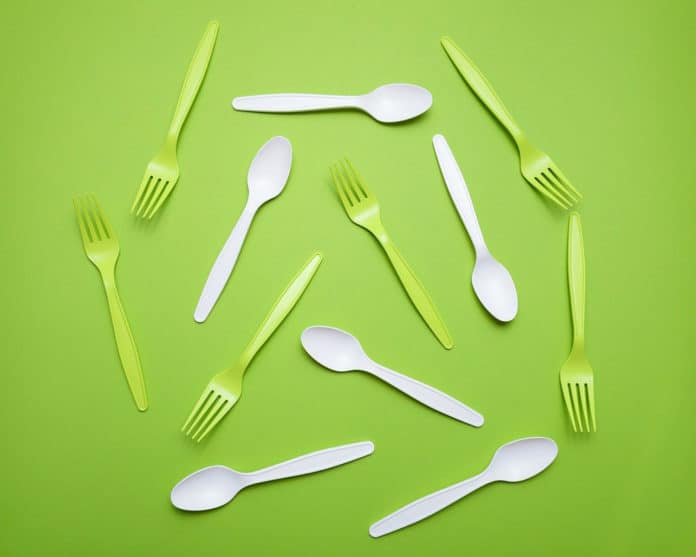Biodegradable plastics are eco-friendly: they can be degraded but can be recycled. Scientists from the University of Canterbury have come up with a solution. They have found a way to convert compostable plastic into home-building foam.
Compostable plastics are made up of Polylactic acid (PLA), a plastic made of fermented starch from corn or sugar cane. It is designed to break down harmlessly, but this process requires industrial composting. Entrance of the plastic into the environment won’t break them down quickly.
Making biodegradable plastics recyclable could alleviate some of the global plastic pollution issues.
The new method can convert single-use plastic such as knives, spoons, and forks made from PLA into foam that can be turned into insulation for walls or flotation devices.
To test their method, scientists placed the plastic cutlery into a chamber filled with carbon dioxide. With the increase in pressure, the gas dissolved into the plastic. When they suddenly released the pressure in the chamber, the carbon dioxide expanded within the plastic, creating foaming.

University of Canterbury (UC) Chemical and Process Engineering academic Dr. Heon Park said, “By tweaking the temperature and pressure, there is a window where we can make good foams. It’s not that every temperature or every pressure works. We found what temperature or what pressure is the best to make those non-foamable plastics into foams.”
“Each time plastic is recycled, it loses a bit of strength. Foams are an ideal material because strength is not important in many applications.”
“Whenever we recycle, each time, we degrade the plastics. Let’s say we have a biodegradable spoon. If we use it and we recycle it back into another spoon, it may break in your mouth.”
“The ideal structure of foam depends on its final use. Bulky foams, which have large or plentiful air pockets, are good for buoys.”
Journal Reference:
- Heon E. Park, Lilian Lin, and Young Lee. Recycling and rheology of poly(lactic acid) (PLA) to make foams using supercritical fluid. DOI: 10.1063/5.0050649
